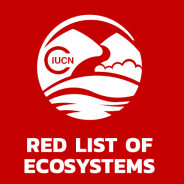
This is the first global assessment of a full ecosystem functional group across the planet using the Red List of Ecosystems and raises concerns about the risk of collapse of mangrove ecosystems. Here is an overview of the results. The world’s mangrove ecosystems cover about 150 thousand km2 along mainly tropical, sub-tropical and some warm temperate coasts of the world. About 15% of the world’s coastlines are covered by mangroves.
Mangrove ecosystems are important for biodiversity conservation, provision of essential goods and services to local communities, and reducing the impact of climate change. For this reason, understanding risk of ecosystem collapse has serious socioeconomic implications.
Threats menacing mangroves are evolving rapidly: in the past we saw degradation from wood exploitation, deforestation for agriculture and shrimp farming, and indirect imparts from dam construction altering freshwater and sediment fluxes. Today, mangroves face additional challenges due to climate change, including sea-level rise and an increased frequency and severity of cyclonic storms.